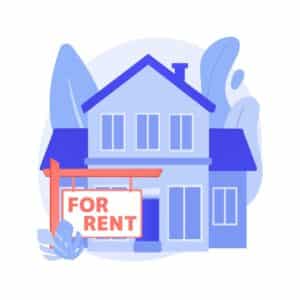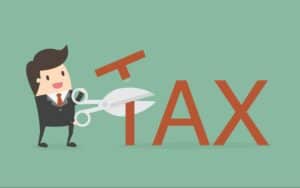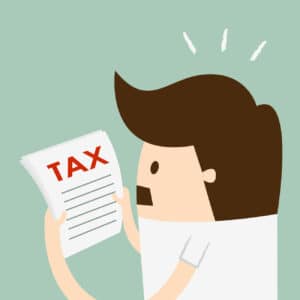Growing your wealth passively through investing in rental properties sounds like a great idea, and owning South Dakota rental property has been no exception.

Such a property is most of the time rented out to other people – and in theory – should maintain a steady flow of cash in the long term.
However, you might eventually encounter a situation where you’ll need to sell your South Dakota property. And if you don’t know the rules and regulations for selling such property, you might find yourself in a difficult situation.
These reasons could include bills piling up, excessive repairs needed, problem tenant fallout, or simply the need to consolidate investing capital.
Whatever the reason – there’s no need to worry: this guide discusses how to sell a rental property in South Dakota efficiently. It also discusses how you can avoid and minimize hefty South Dakota tax payments when it comes to rental property real estate transactions.
So, if you are looking to sell your South Dakota rental house soon, then read on!
Why Should You Consider Selling A Rental Property South Dakota?
As we have mentioned before, rental housing is a type of property that is rented out to other people. In other words, the actual owner of the South Dakota property does not live in it (aka an absentee owner). Instead, it is used as a home by third parties who pay a monthly rent to the owner.
Any type of property can be converted into a South Dakota rental property. For instance, you can rent out a small apartment or a large mansion to other people, in which case they will become rental properties.
From a financial standpoint, it is a smart thing to do since renting out your properties can generate passive income without any extra effort. And if you are still a working individual, it can be even more profitable.
That is because the steady income generated from rental properties can give a great boost to your annual income. Because of that, you can think about expanding your wealth in the long term, which is always a good thing to do. After all, it provides cushioning against any uncertainties that may pop up in the future.
So, given such advantages of South Dakota rental properties, why should you consider selling them anyway? Well, there can be several reasons why selling a rental property can be a good idea, some of which have been discussed below.
1. Lack Of Convenience
Sometimes, landlords may consider selling one or more of their rental properties for convenience reasons. This is generally the case when they move to a new house that is located in a different state.
In that situation, it won’t be feasible to manage the properties in the previous place, which is why selling them is a better option. Furthermore, if they end up purchasing new properties to rent out near their current location, then it will become difficult to manage so many properties at once.
2. Looking For Other Investments
Sure, investing in property is an alluring strategy to increase wealth, but it is not the only one that is available today. If a landlord wishes to explore different avenues to make money, they may consider selling the South Dakota rental property.
To be more precise, they would take the money they get from the sale and invest it elsewhere. Of course, they could just keep the property as is and invest the savings and income generated from it into something else. But not every landlord may have such financial resources to do that, which is why selling the property becomes a more logical choice.
When Is It Time To Sell A Rental Property South Dakota?
It goes without saying that you shouldn’t just sell the property whenever you like, especially if saving on taxes and making a decent profit out of it is your goal. Besides, you need to take into account the market conditions as well, which can affect the price of your property.
Selling when the market is in bad shape will cause you to lose money on the house, which is never a favorable outcome for landlords. That is why we have discussed when it is best to sell your rental South Dakota property in this section. Read on if you’re curious.
1. The Prices Of Home Sales Are On The Rise
Without a doubt, the best time to sell a South Dakota rental property is when home sale prices are rising. That way, you can exploit the market to make a decent profit on your property.
For instance, if you consider the latest data, the median home sale price today is around $416,000. This is much higher than the median home sale price of around $154,000, which was reported a decade ago. Naturally, this implies that home sale prices are getting more profitable at present, which means that it is a good time to sell your rental property now.
Besides, no one can predict how long the upward trend may last, which is why it’s wise to sell your property when the prices are still steadily rising.
2. Increased Demand For Housing Property
It is not a wise decision to sell your South Dakota property when no one is interested in buying it. If there is a lack of demand for rental housing properties, you will have difficulty finding decent buyers. Not only that, but you may also have to reduce the price of your property significantly to lure buyers.
That will be financially disadvantageous since you may have to sell the home at a price lower than what you paid to purchase it in the first place. In simple words, you will have to suffer a loss, which will affect your capital gains and savings.
So, it is better if you sell the house when the demand is higher than the supply. If you hold off on selling your South Dakota rental property until that time, you can get buyers easily. And the best part is that you can sell the property quickly and at a much better price, which can improve your capital gains.
3. Changes In The Local South Dakota Economy
When thinking about selling your rental property in South Dakota, it is not just the condition of the local housing market that you need to consider. It is important to take into account other economic factors as well, such as the South Dakota job market, changes in the industrial landscape, migration of people, and so on.
For instance, if the city in which you have the rental property is undergoing economic growth, there may be new industries springing up, giving rise to new job opportunities. It will cause more people to migrate there, which means that you can find a lot of tenants for your property and generate a steady flow of rental income.
On the flip side, if there is an economic slowdown, people will move away from that place, which means that you will have trouble finding tenants for your investment property. Because of that, it will sit idly without any use, and that can be wasteful. In that situation, it is better to sell your South Dakota rental property and look for other investment opportunities.
4. Rental Property Is Damaged And Needs Major Repairs
Let’s be honest – no one likes to live in a damaged house. So, if your South Dakota rental property has noticeable damages, you will have a hard time finding tenants to live in it.
In that scenario, you can either fix the house or sell it altogether. Many landlords find it more feasible to do the latter since such property repairs can take a lot of time and money to complete. This is especially true if the damages are quite significant, such as issues with the foundation or problems with the key utility systems like plumbing and electricity.
If that is the case, you will be better off selling the property to a real estate investor instead of undertaking repairs. Fortunately, there are specialized agencies that deal with such properties, which means that you shouldn’t have much difficulty in selling the one that you own.
How To Sell A Rental Property South Dakota?
Now, let’s take a look at how one can go about selling rental properties in South Dakota. As you can see from the above discussion, selling a rental property is not that simple since different aspects need to be kept in mind. Luckily, we have discussed some steps here which can ensure a smooth rental property sale.
1. Get The Property Inspected
The first thing that you’ll need to do is get the rental property inspected by a qualified professional. Usually, you will need to get the property inspected by the local housing authorities.
If you inform them beforehand, they will send a professional inspector to check the condition of your property. Based on their examination, they will provide documentation of any issues present, along with the recommended repairs that you can undertake to address them.
2. Decide How You Want To Sell The House
After the inspections are over, you will need to decide how you wish to sell the house. To be more precise, you need to determine whether you want to sell the South Dakota rental property as-is or undertake some repairs before selling.
If you decide to sell the house as-is, then the prices will need to be adjusted accordingly. After all, no one will pay full price for a house that is not in the best shape. And if the house has issues that make it hazardous to live in, it may even be considered condemned. In that situation, you may only get the price of the land on which it stands.
However, if there are some minor repairs required, then you may consider fixing the house before selling it. You don’t have to spend too much time or money on the repairs in this case, which will make it a lot more feasible. Also, you can get a higher price from the buyer if you sell it that way.
3. Determine The Type Of Buyer You Prefer
Once the above steps are taken care of, you will need to decide on what type of buyer you are looking for. There are several types of buyers to consider, such as real estate investors, home-buying agencies, first-time home buyers, and so on. That’s why this step is crucial since it will determine the type of marketing strategy you will need to use.
You will also need to align your sale expectations with the buyers so that the property can be sold successfully. Each buyer will have different expectations when purchasing the house, and if those expectations are not met, you will have a difficult time selling the rental property.
4. Research The Tax Implications Of The Home Sale
Analyzing the South Dakota tax implications is possibly one of the most important steps of the entire process. That’s because real estate transactions often come with hefty taxes, and they can easily eat into your earnings if you are not careful.
This is why you will need to carefully calculate the taxes on the property – so that any legal hassles can be avoided. If possible, you can seek help from a qualified financial advisor to make this process smoother.
On that note, many of you might be wondering – can you avoid paying these taxes while selling the South Dakota rental property? Well, the simple answer to that question is – no; you can’t exactly eliminate taxes altogether. But you can cut down on the tax payments considerably if you follow the discussions we have provided in the subsequent sections.
What Are The Different Taxes That Need To Be Paid On Rental Property Sales South Dakota?
When selling, rental property owners need to keep two types of taxes in mind – the depreciation recapture tax and the capital gains tax. Below, we have discussed these two types of taxes in greater detail.
A. Depreciation Recapture Tax South Dakota
Before we explain what depreciation recapture tax is, let us explain what depreciation means. The value of rental properties, like most other commodities, falls after it has been purchased, mainly due to general wear and use. This reduction in value over time is known as depreciation.
Depreciation deductions are used by property owners to reduce the overall taxable net income for the property. So, if you owned the property for five years and claimed a depreciation deduction of $5,000 dollars for this duration, the total depreciation expense will be $25,000.
With that in mind, the depreciation recapture tax is paid on the depreciation expenses filed by the property owner. The main purpose of this tax is to capture the depreciation amount and tax it accordingly during the time of property sale.
Going by the above example, if you sell the South Dakota property at a higher price than its original purchase price, you’ll need to pay this tax on the $25,000. The depreciation recapture tax rate is 25%, which means that you will need to pay an amount of $6250 when you sell the rental property.
B. Capital Gains Tax South Dakota
Capital gains tax is the most crucial tax that you need to consider while selling your rental property. That’s because it can have the greatest impact on the selling process of your rental property.
According to the Internal Revenue Service (IRS), everything that can be used for investment purposes is considered capital assets. Subsequently, if you decide to sell any capital asset that you own, the profit made on the sale will be known as a capital gain. Therefore, the tax that is paid on these gains is known as capital gains tax.
Naturally, the higher your profits are, the more tax you will need to pay. In this regard, capital gains taxes are classified into two types – short-term capital gains and long-term capital gains.
I. Short-Term Capital Gains
If you owned the property for a year or less, then the profits you make from selling it will be considered short-term capital gains. Naturally, the tax that will be applicable in this case will be the short-term capital gains tax.
Technically, this tax has a similar rate as the regular taxable income bracket that you fall under. This means that you may have to pay anywhere between 10% and 37% tax on such property sales, which constitute the regular income tax brackets for the year 2023.
Ii. Long-Term Capital Gains
In contrast to the above, long-term capital gains are applicable when you have owned the South Dakota property for over a year. In this case, you have to pay capital gains tax at much lower rates of 0%, 15%, and 20%. Of course, the actual tax rate that is applicable among these is based on the annual income of people filing.
As you can see, if your annual income is relatively low, you can avoid capital gains tax entirely. According to present rates, if you are single and have an annual income below $44,625, you will fall under the 0% capital gains tax rate. In other words, it will eliminate the need for you to pay capital gains tax on your rental property sale.
That said, the thresholds for taxable capital gains keep changing every year, thanks to the changing inflation rates. This means that you will need to look into the current rates before proceeding further.
How Can You Avoid Paying Taxes On Your Rental Property Sale South Dakota?
As we have mentioned once before, you may not be able to avoid paying taxes on your South Dakota rental property sale entirely. But you may be able to reduce the taxable amount considerably if you follow the strategies below.
1. Make Use Of The 1031 Tax-Deferred Exchange in South Dakota
For those who are unaware, Section 1031 of the Internal Revenue Code can essentially be used as a tax break. It states that real estate investors can defer paying tax if they sell one rental property and buy another at a similar or greater value (basically, a “like-kind” exchange).
Section 1031 Tax-Deferred Exchange can be used in South Dakota to avoid both capital gains tax and depreciation recapture tax. However, the only catch is that you cannot use the money from the sale on anything else.
Apart from that, there are a few other conditions, such as:
- Proceeds from the sale should be used toward a business or investment property
- The replacement property needs to be designated within 45 days of the sale
- Purchase of this property needs to be finalized within 180 days of the sale
2. Use The South Dakota Rental Property As Your Primary Residence
If you convert the rental property into your primary residence before selling it, you can avoid paying capital gains tax on some of the profits. According to the Taxpayer’s Relief Act of 1997, joint filers are exempt from paying capital gains tax on profits up to $500,000. For single filers, the upper limit of exemption is $250,000.
Obviously, there are a few more conditions to this act, which are:
- You must have owned the home for at least two years
- You lived in the house for over two of the five years of ownership (2-in-5-year rule)
3. Use Tax Harvesting
Tax harvesting is another strategy that can be used to minimize the capital gains tax owed to the government. Such a strategy involves selling one property at a loss, which is then used to offset gains made from selling another property within the same tax year.
Since it relies on making a loss with one property to achieve capital gains tax exclusion on another, it is otherwise referred to as tax loss harvesting. For instance, let’s say that you sold one of your properties at negative equity of $20,000. At the same time, you have sold another property at a gain of $30,000. In that situation, your taxable capital gain will be only $10,000.
Conclusion
Now that we have arrived at the end of this detailed guide, we hope that you are feeling confident about selling your South Dakota rental property, and its tax implications.
As long as you follow the instructions and tax strategies provided here, you won’t have any major difficulties in selling the property.
We at Priority Home Buyers can help you through a fast sale in South Dakota. Our process is completely remote and tailored to absentee owners.
Our goal is to get you the cash in hand and ability to move on, fast. We are available for a free consultation 24/7 by phone at 877-775-0988 :)
It is always a wise idea to plan for the sale well in advance. That way, you can minimize risks and create contingency plans just in case. We’re ready to help every step of the way!
South Dakota Seller Resources










